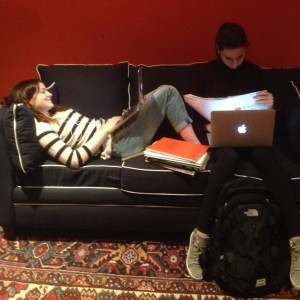As final exams and paper deadlines approach, I find myself constantly questioning if I am spending my time efficiently. During exam periods, I often wonder how much time I should spend catching up on readings that I skimmed throughout the semester. It’s hard to finish every reading on time when professors assign hundreds of pages per week — and it’s almost impossible to catch up over reading period. Right now, this issue is particularly salient in my sociology class, which requires a 5-page-essay as a take-home exam. How can I review relevant material effectively and efficiently when I also have three other courses to focus on?

While preparing for this exam, I thought back to a PCUR post I wrote in October, Syllabi, Charts and Research Plans: Your Best Friends for Effective Information Management. In this post, I described a McGraw Center workshop that addressed strategies for successfully managing and utilizing large quantities of class material. One of the main strategies addressed was “blueprinting” courses. This involves using the syllabus to decipher the main units of the class, creating and filling in a table with those units and the main ideas, and then visualizing connections and major themes in the course. An example of a basic blueprint table I made for my Arts and Urban Studies seminar can be found here. If you blueprinted your courses throughout the semester, you now have an incredibly useful tool for tackling take-home exams, research papers and final exams. If not, have no fear! You can still prepare for your final assignments in an organized, timely and effective way. Here is a short guide I created to help you do so:
A Quick and Dirty Guide to Reading Period Blueprinting
- Look at your class syllabus and take note of how the material is broken up. Do each week’s readings cover a different unit? If so, jot down the title of each unit and highlight any relevant key terms from the titles.
- For each unit, look back at which readings were assigned for it and which classes/lectures covered it. Write down the main ideas from these readings and your class notes, paying special attention to how they relate to the overarching unit.*
*If you didn’t do the readings for a unit, revisit your class notes and any succinct summaries your professor may have provided, like lecture notes or a handout. Sometimes it is helpful to go back and read the introductions and conclusions of books or articles you skimmed/skipped. The point of blueprinting (especially the quick and dirty kind) is not to absorb every piece of information in the reading. Rather, blueprinting is a way to decipher the main ideas of a reading and to understand how they fit into the larger themes of the course.
- Once you have the main ideas of each unit laid out, start taking note of how different ideas and units are connected. Do the readings from each unit address different perspectives? Do they illustrate an evolution? Do they expand upon one another? Go back to the syllabus and check whether it lists any course objectives or questions. If so, how do the connections between units and main ideas help you meet those objectives or answer those questions?
~~~~~~
While this guide is directed towards writing- and reading-heavy curricula, it is also a useful way to organize and analyze material for problem-set based courses. Being able to step back and understand the patterns and path of course material will help you do well on a final assignment, especially a take-home exam or research paper/project. For any take-home or in-class essay, chances are your professor will ask about one of the main objectives of the course. Quick and dirty blueprinting can help you manage course material and address that objective without wasting your limited reading period time.
—Emma Kaeser, Social Sciences Correspondent

